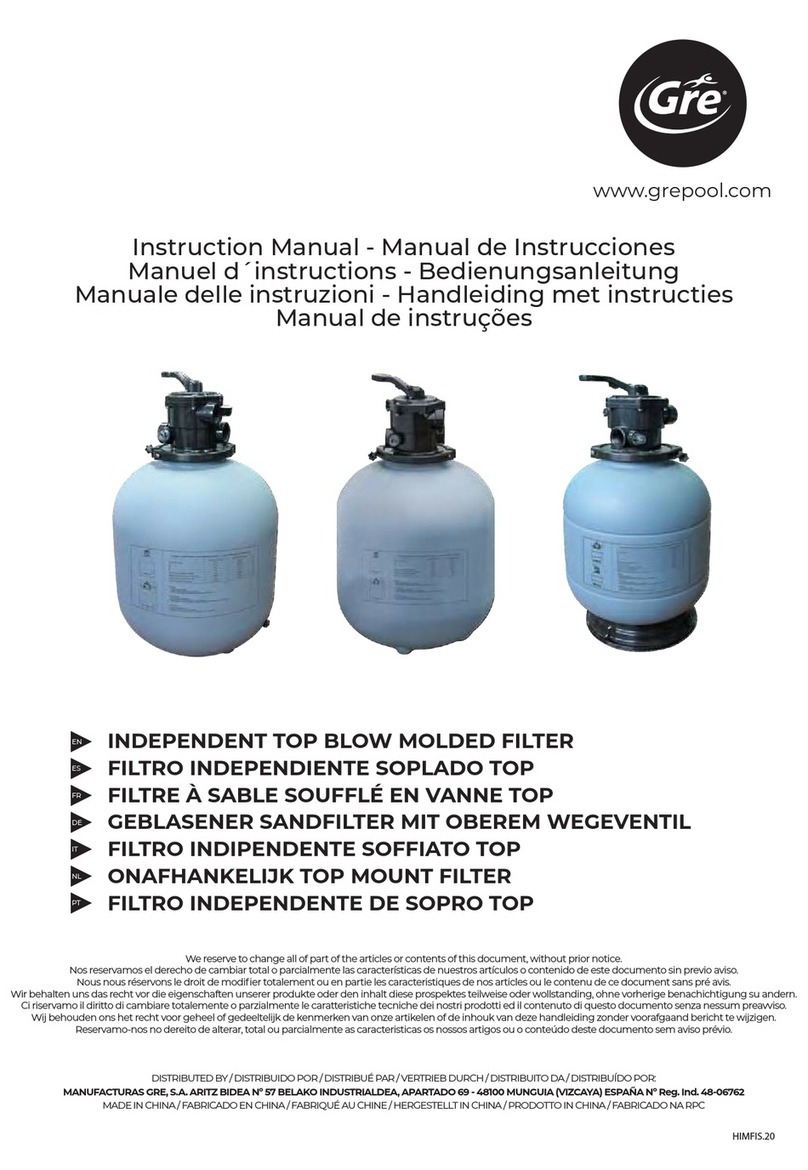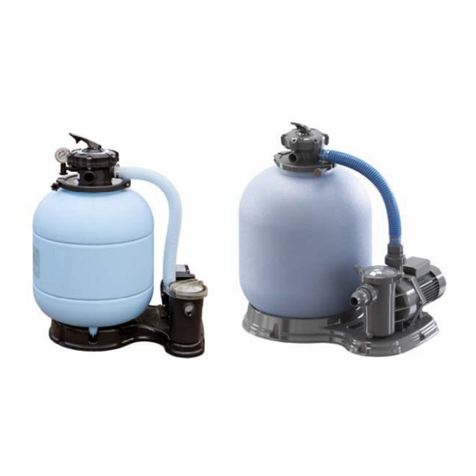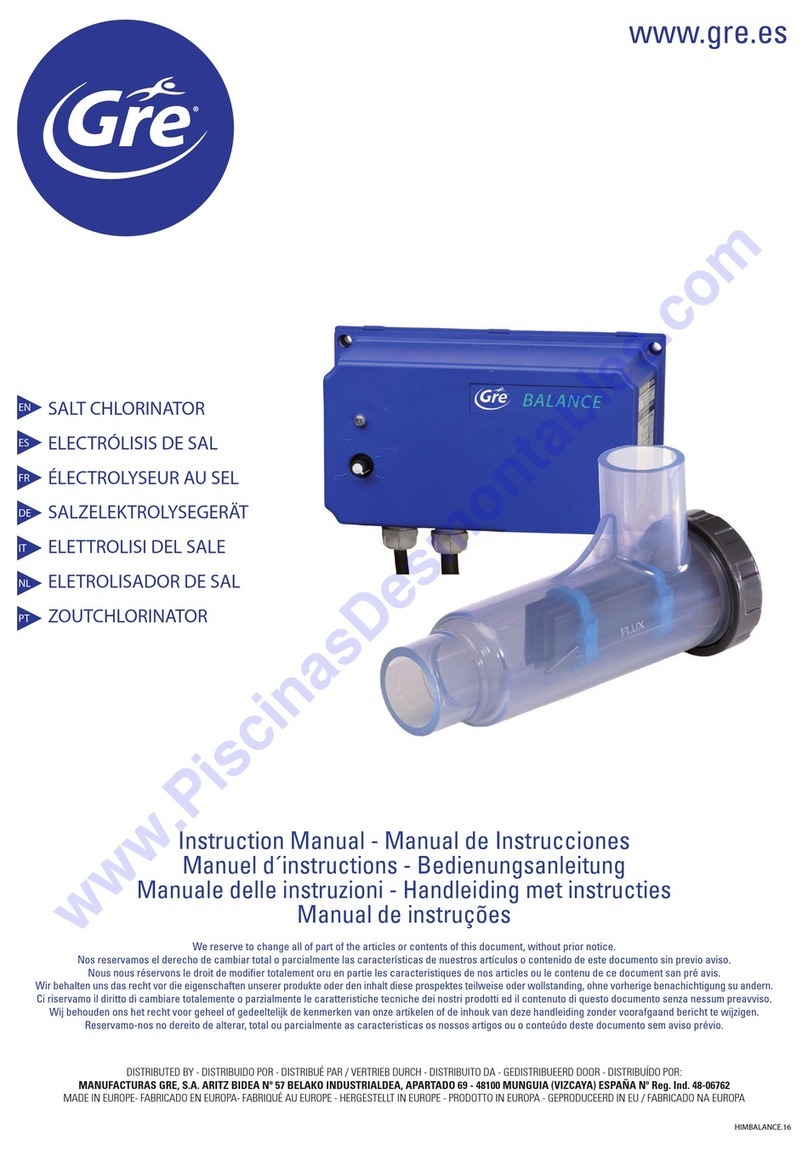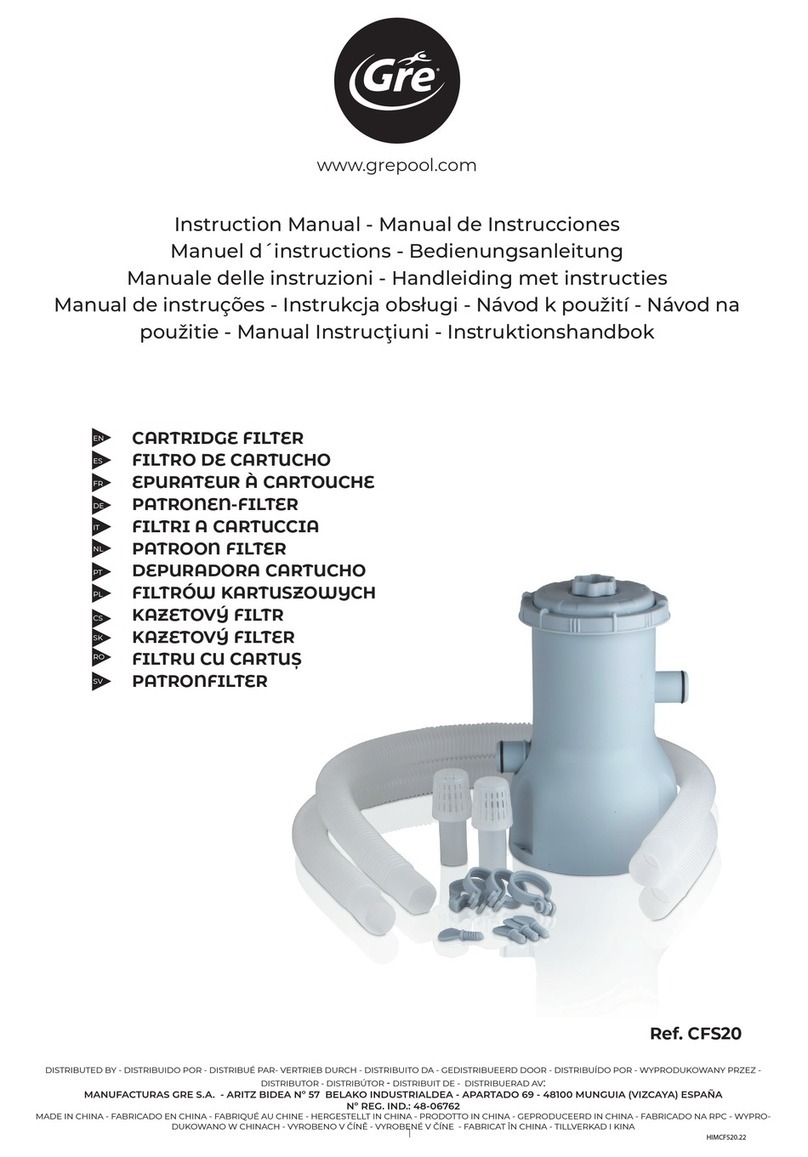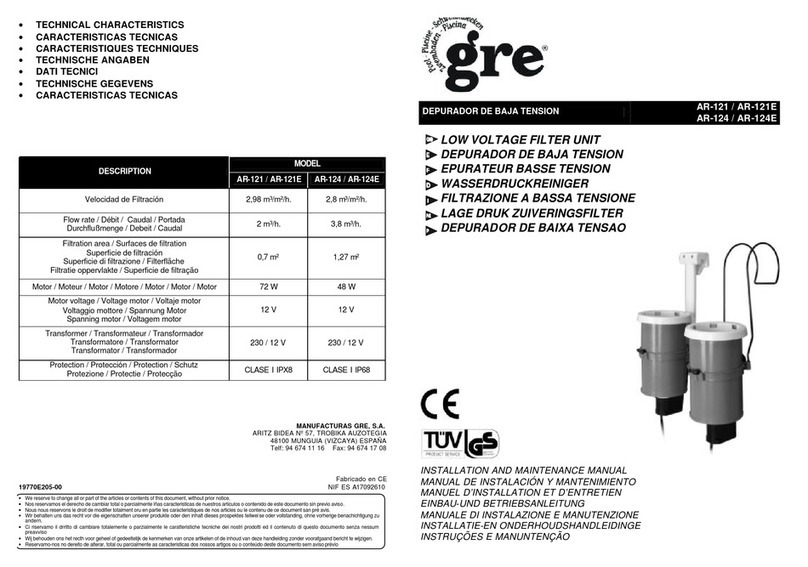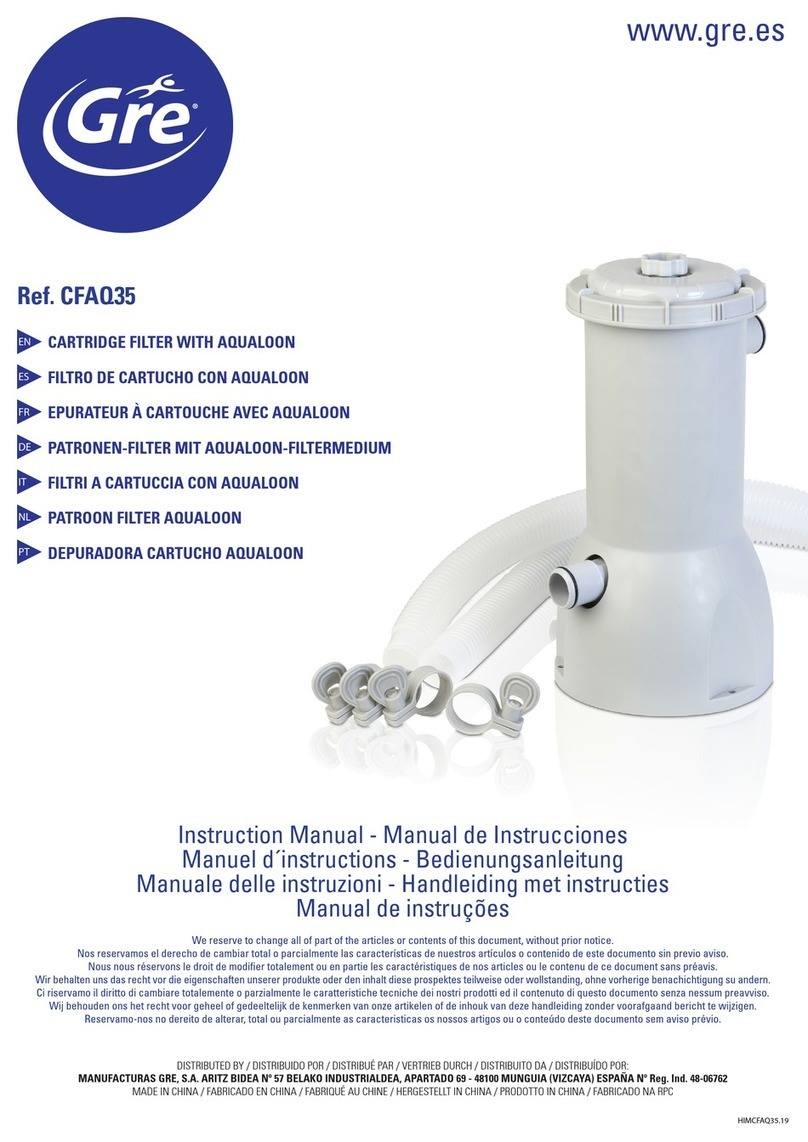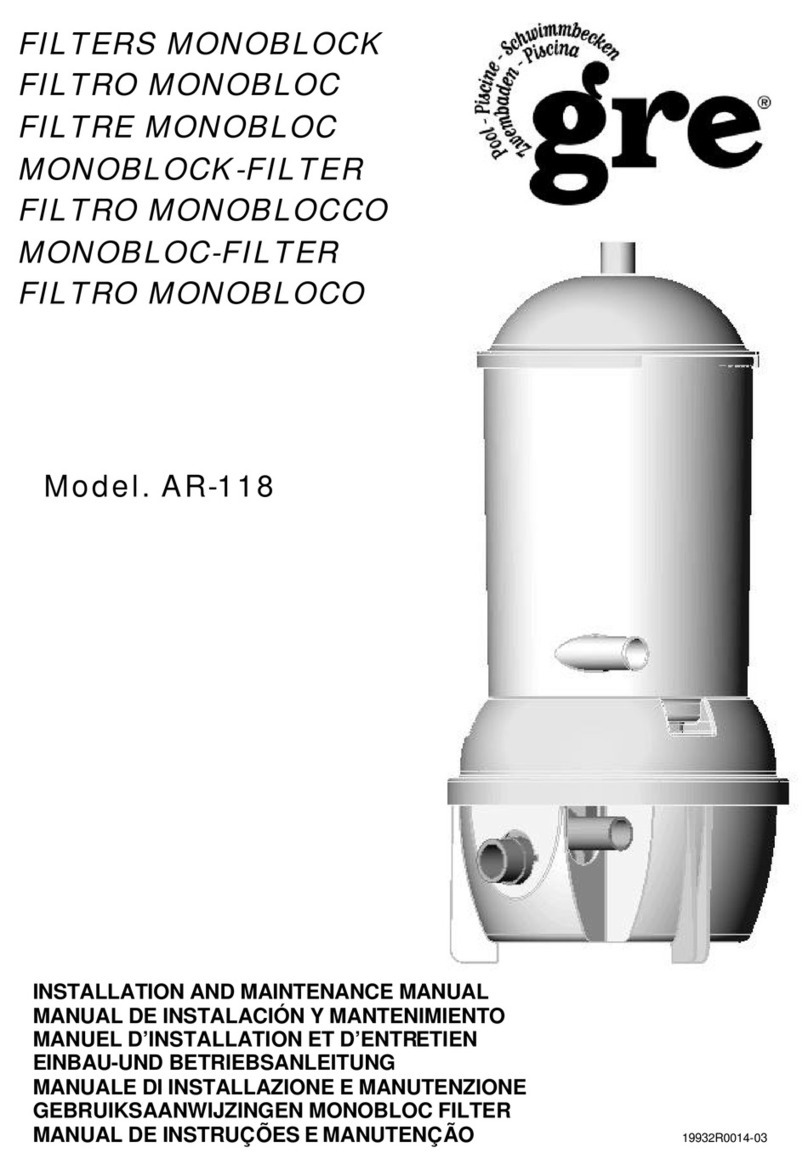
7
6LAVADO DE LA ARENA (Fig.7)
Se recomienda efectuar un ciclo de lavado de la arena cada semana.
Para efectuar un lavado de la arena del filtro, proceder como sigue:
•En primer lugar necesitaremos una manguera de jardín conectada a un grifo,
•Desenchufar el filtro de la toma de corriente y cerrar las válvulas de aspiración e impulsión.
•Desconectar la manguera de ø25 mm. y de 4,5 m. de largo de la válvula de retorno y conectar a ella, mediante el
adaptador, la manguera de jardín por el extremo opuesto al grifo.
•Desconectar la manguera de ø25 mm. y de 1 m. de largo, de la impulsión de la bomba y llevar este extremo a un
desagüe.
•Abrir el grifo de la manguera de jardín (la presión del agua no debe ser elevada, para evitar expulsar la arena de
sílex) y dejar circular el agua hasta que se observe que el agua que enviamos al desagüe sale limpia. Esta operación
puede durar aproximadamente 1 minuto, en esta operación las conexiones pueden gotear, ello no indica avería.
•Volver las mangueras a su conexión original y dejar reposar el filtro durante unos minutos para evitar que salga
arena de sílex hacia la piscina, el filtro está listo para comenzar un nuevo ciclo de filtración.
7LIMPIEZA DE FONDO Y SUPERFICIE
Esta bomba no permite utilizar limpiafondos de aspiración. Utilizar únicamente limpiafondos de tipo ventury.
Este filtro no incorpora skimmer. Utilice un recogedor de hojas para la limpieza de la superficie y un dosificador de
cloro flotante para el producto químico.
Ver manual de la piscina para accesorios señalados.
8SUSTITUCIÓN DEL CABLE
•Desconectar el aparato de la toma de corriente.
•Cerrar las válvulas de aspiración e impulsión.
•Desconectar la manguera de aspiración del filtro, levantar el terminal rápidamente e introducirlo en la piscina.
•Desconectar la manguera de impulsión del filtro, levantar el terminal rápidamente e introducirlo en la piscina.
•Desconectar la manguera de ø25 mm. y de 1 m. de largo de la impulsión de la bomba.
•Con precaución ladear el monobloc y desprender la bomba junto con su base de su ubicación (destornillar los cuatro
tornillos con un destornillador).
•Desconectar los terminales del motor atendiendo a su posición.
•Extraer el cable, sustituirlo, y proceder de modo inverso al descrito para volver a montar el equipo.
9PERIODO DE INVIERNO -MANTENIMIENTO FUERA DE USO
Durante el periodo de invierno, deberá de vaciarse el agua del filtro y de todo el circuito (bomba, mangueras, etc.) por
este motivo y tras haber hecho un autolavado final para dejar limpia la arena de sílex procederemos a cerrar las
válvulas de aspiración e impulsión en la piscina, desconectaremos las mangueras de sus conexiones con el filtro
(aspiración bomba, impulsión bomba, tapa filtro), procediendo a escurrir el agua que pueda quedar en su interior,
dejaremos también que el agua del filtro se escurra totalmente, prestaremos especial atención a dejar bien seca la
bomba de agua, y procederemos a guardarlo en un lugar seco, esta operación también deberemos llevarla a cabo
siempre que consideremos que no usaremos el filtro durante periodos largos de tiempo. Es aconsejable aprovechar
esta ocasión para verificar visualmente el estado del cable y proceder a su sustitución si fuese necesario, para ello
proceder como se describe en el apartado sustitución del cable.
No es necesario sacar el sílex de la bombona, tras un periodo de invernaje procederemos a la instalación del filtro
como si fuese nuevo.
PROBLEMA CAUSA SOLUCIÓN
Falta corriente en la línea eléctrica. Verificar que hay corriente en la línea eléctrica,
No arranca el motor. Terminales flojos en el motor. Abrir el motor y revisar los terminales.
Una vez conectado no da caudal en la válvula
de impulsión. La válvula de aspiración está cerrada. Abrir la válvula.
El filtro da poco caudal. La arena de sílex está sucia, Efectuar un autolavado.
EL filtro gotea por los terminales de las
mangueras. Las mangueras están flojas o mal introducidas
en los terminales. Introduzca los terminales hasta el fondo de las
mangueras y apretar las abrazaderas.
Sale agua por la boca superior del filtro. Hay suciedad en la junta de la boca superior
del filtro. Limpie de arena la boca, coloque
correctamente la junta y vuelva a apretar.
De no poder solucionar su problema contacte con el fabricante de la piscina en el teléfono y horario indicado en sus instrucciones.
MANGUERA D.25 / D.32












